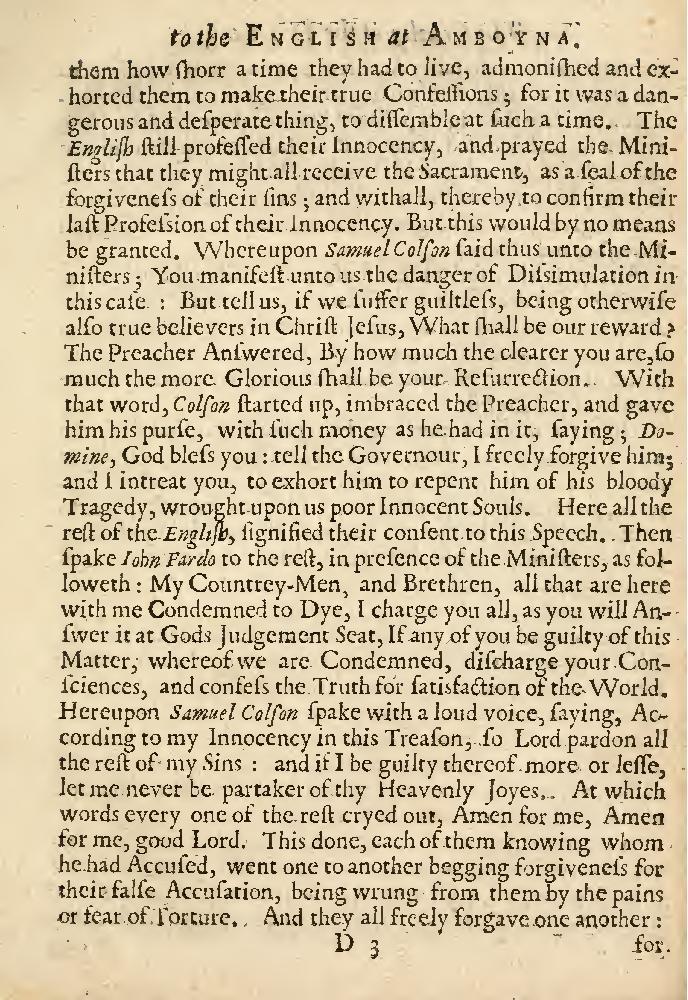Early Modern Dutch and English Propaganda
Annotation
The Amboyna trial was a famous conspiracy case that took place in 1623 when a group of Japanese mercenaries were accused of plotting with English merchants to seize control of a Dutch fort on a remote island in Southeast Asia. Despite occurring thousands of miles away in an unfamiliar part of the world, the trial on Amboyna swiftly escalated to become one of the most famous legal cases of the age in Europe and the subject of a long-running dispute between the Dutch and the English governments. The case is notable because it provides a window into the fear and paranoia that was such a ubiquitous companion to European colonial empires.
One of the main reasons why the Amboyna Conspiracy Trial has remained so controversial for so long was because it became the subject of a ferocious and sustained campaign of propaganda that was designed to influence public opinion on both sides of the Channel. English and Dutch writers competed to produce ever more inflammatory pamphlets that sought to condemn their rivals as ruthless traitors intent on spilling innocent blood or immoral tyrants who had engaged in what was effectively judicial murder. These pamphlets turned the Amboyna Conspiracy Trial into a source of national outrage as well as a topic of intense public interest and discussion in both England and the Dutch Republic.
This is an excerpt from a pamphlet produced on the English side in 1624 in response to a Dutch-authored pamphlet that sought to systematically demolish the Defense’s major objections to the case. The purpose of this English pamphlet was to denounce the Dutch as brutal murders who had deliberately fabricated a conspiracy as a pretext to eject the English from the spice islands. Its author, John Skinner, collected the most explosive testimony presented by the Amboyna survivors and then proceeded to exaggerate it for effect. This excerpt is a good example of the hyperbolic language found in both Dutch and English pamphlets, and the scene seems to have been largely invented. In it, the English are presented as virtuous, godly victims in sharp contrast to the villainous Dutch. Not only do the English merchants at Amboyna go to their deaths with a pure conscience, but they in fact forgive the Dutch for their terrible crimes against them. Scenes like this fanned the flames of anti-Dutch sentiment in England during this period.
Text
The English still professed their innocency, and prayed the ministers that they might all receive the sacrament, as a zeal of the forgiveness of their sins, and withal thereby to confirm their last profession of their innocency. But this would by no means be granted, whereupon Samuel Colson said thus unto the ministers: You manifest unto us the danger of dissimulation in this case; but tell us if we suffer guiltless being also otherwise true believers in Christ Jesus, what shall be our reward? The preacher answered, by how much the clearer you are, so much the more glorious shall be your resurrection. With that word Colson started up embraced the preacher, and gave him his purse with such money as he had in it, saying, Domine, God bless you. Tell the Governor I freely forgive him; and I entreat you to exhort him to repent him of this bloody tragedy wrought upon us poor innocent souls. Here all the rest of the English signified their consent of this speech.
Credits
A true relation of the vniust, cruell, and barbarous proceedings against the English at Amboyna in the East-Indies, by the Neatherlandish gouernour and councel there, John Skinner, London, 1624.
